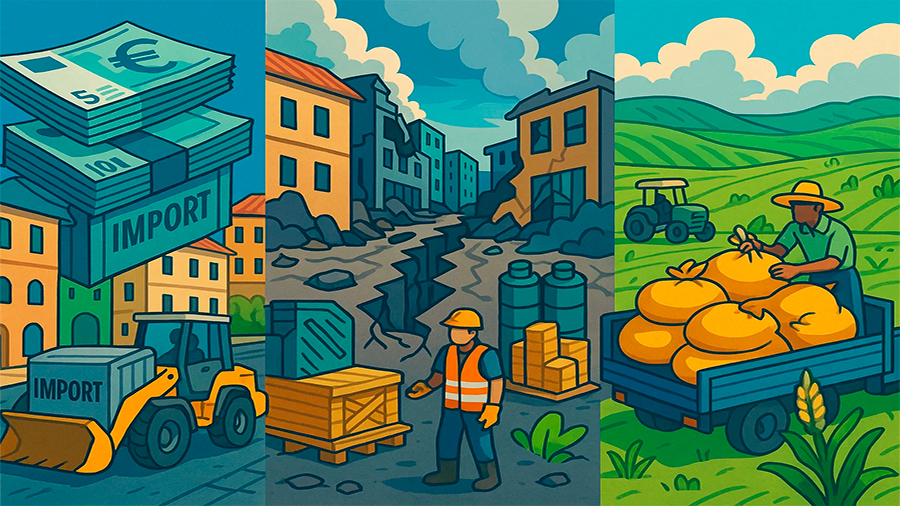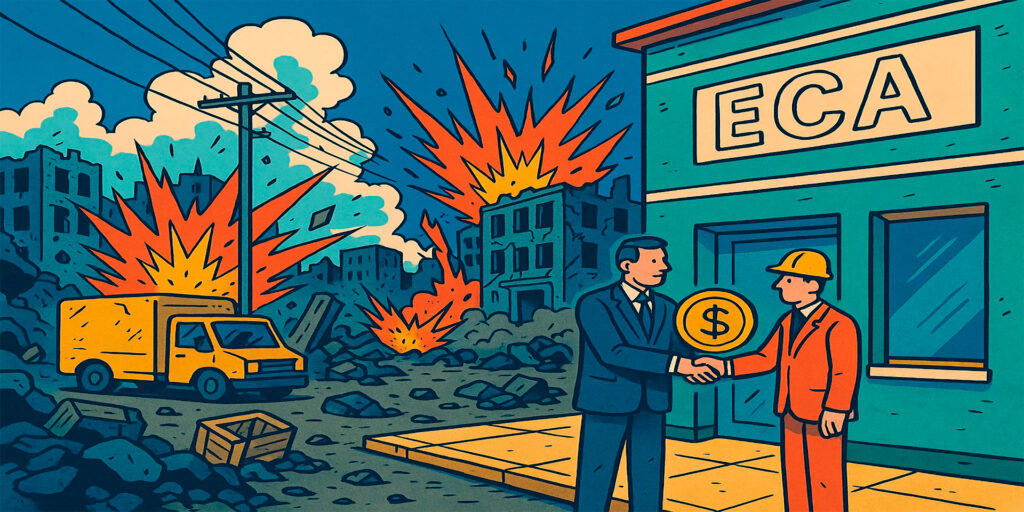Using Export Credit Agencies (ECAs) in Times of Crisis
When global trade faces turbulence, businesses often struggle to keep contracts alive. Supply chains break, banks hesitate to lend, and insurers retreat from risky markets. In these moments, export credit agencies (ECAs) become critical. They step in with guarantees, loans, and insurance that give exporters the confidence and liquidity to keep trading. By reducing uncertainty, ECAs help companies maintain international operations even when private markets freeze. Understanding how they work shows why they matter so much during crises.
What ECAs Do in a Crisis
Export credit agencies exist to support trade when risks are too high for private lenders. They provide loan guarantees that encourage banks to keep financing exporters. They also offer direct loans to buyers overseas, ensuring that large orders—like aircraft, turbines, or construction equipment—are still delivered even if credit markets tighten. Insurance is another tool. When political unrest or sanctions threaten payments, ECAs cover the risk so exporters can proceed. The core idea is simple: keep trade flowing when ordinary financing channels dry up. In crisis conditions, that stability can mean survival for both companies and industries.
Bridging Financing Gaps
Crises often create sudden credit gaps. During financial shocks, banks pull back from cross-border lending. Small and medium exporters face the harshest impact, as private financiers see them as too risky. ECAs bridge that gap. Their guarantees lower the risk for commercial lenders, making it possible to finance deals that would otherwise stall. For example, when the 2008 financial crisis hit, many European ECAs expanded programs to cover short-term trade finance, preventing a collapse in exports. More recently, during the COVID-19 pandemic, ECAs in Asia, Europe, and North America stepped up to cover supply disruptions, ensuring goods could still move across borders despite market volatility.

Supporting Companies in Fragile Markets
Not all crises are global. Sometimes instability in a single region makes private financing impossible. Civil conflict, sanctions, or debt defaults can stop banks from backing deals. ECAs make it possible to continue trading under these conditions by insuring exporters against non-payment or political disruption. For instance, when African infrastructure projects faced uncertainty due to currency shortages, ECAs provided guarantees that reassured both local governments and foreign contractors. This support keeps markets open that might otherwise be cut off, maintaining both jobs at home and development abroad.
Examples of ECA Involvement During Crises
History shows how often ECAs play a stabilizing role. During the Eurozone debt crisis, export credit guarantees were expanded in Southern Europe to help local companies continue importing critical machinery. After natural disasters such as the 2011 earthquake in Japan, ECAs provided cover for exports of rebuilding materials and energy equipment, allowing reconstruction to move forward quickly. In Latin America, when commodity prices collapsed, ECAs supported exporters by ensuring payment security for agricultural shipments. These examples reveal a consistent pattern: whenever traditional credit tightens, ECAs move in to provide a bridge until confidence returns.
Mini Case Study: ECAs During the COVID-19 Pandemic
The COVID-19 pandemic offered one of the clearest demonstrations of ECA importance. In the United States, the Export-Import Bank (Exim Bank) rapidly expanded programs to cover supply chain disruptions, providing guarantees for essential exports such as medical equipment and industrial parts. In the UK, UK Export Finance (UKEF) launched emergency measures to guarantee billions in trade finance, helping British exporters keep contracts alive while private lenders pulled back. Across Europe, ECAs temporarily lifted restrictions to support short-term export credit insurance, giving companies the ability to keep shipping goods when the risk of default soared. These interventions were not abstract—they directly kept goods moving across borders and prevented thousands of exporters from collapsing under the weight of uncertainty.
Mini Case Study: The Asian Financial Crisis of 1997
The Asian financial crisis showed another side of ECA support. As currencies collapsed in Thailand, Indonesia, and South Korea, private lenders withdrew almost overnight. Importers could not secure foreign exchange, and exporters faced cancelled contracts. ECAs stepped in by offering guarantees and insurance to keep trade lines open. In South Korea, where banks faced severe liquidity shortages, ECA-backed financing helped companies continue importing critical raw materials for manufacturing. These measures allowed production and exports to continue at reduced but vital levels, preventing deeper economic collapse. Without ECA support, the downturn in trade would have been far sharper and recovery far slower.

The Balance Between Risk and Recovery
ECAs operate at the intersection of government policy and global trade. Their backing often comes from national treasuries, meaning taxpayers indirectly support these guarantees. This creates debate about how much risk governments should take on. Yet during crises, the alternative—collapsing exports, shrinking production, and mass layoffs—is often far costlier. ECAs accept calculated risk, not blind exposure. By carefully structuring guarantees and setting limits, they ensure that exporters can trade with some certainty while avoiding unsustainable losses. For many companies, that balance is what keeps them alive during turbulent times.
Why ECAs Matter for the Future
Looking ahead, the role of ECAs is likely to grow. Global supply chains face new pressures from climate change, geopolitical rivalry, and shifting trade rules. As private lenders pull back from riskier markets, demand for ECA-backed financing will rise. Green infrastructure, renewable energy, and digital technology exports are areas where ECAs are already expanding activity. During future crises, their ability to provide guarantees and insurance quickly will remain central to keeping trade stable. For exporters navigating an unpredictable world, ECAs are not a last resort—they are becoming a standard tool of survival.
Conclusion
Export credit agencies play a quiet but decisive role in times of crisis. By offering guarantees, loans, and insurance, they allow trade to continue when private markets falter. Their presence reassures banks, protects exporters, and sustains industries that might otherwise collapse under pressure. While debates about risk and government backing will continue, the evidence shows that ECAs make the difference between disruption and continuity. In a world where crises are frequent, their importance is only set to grow. The experience of COVID-19, the Asian financial crisis, and countless other disruptions proves that ECAs are not just financial tools—they are lifelines for global trade.

